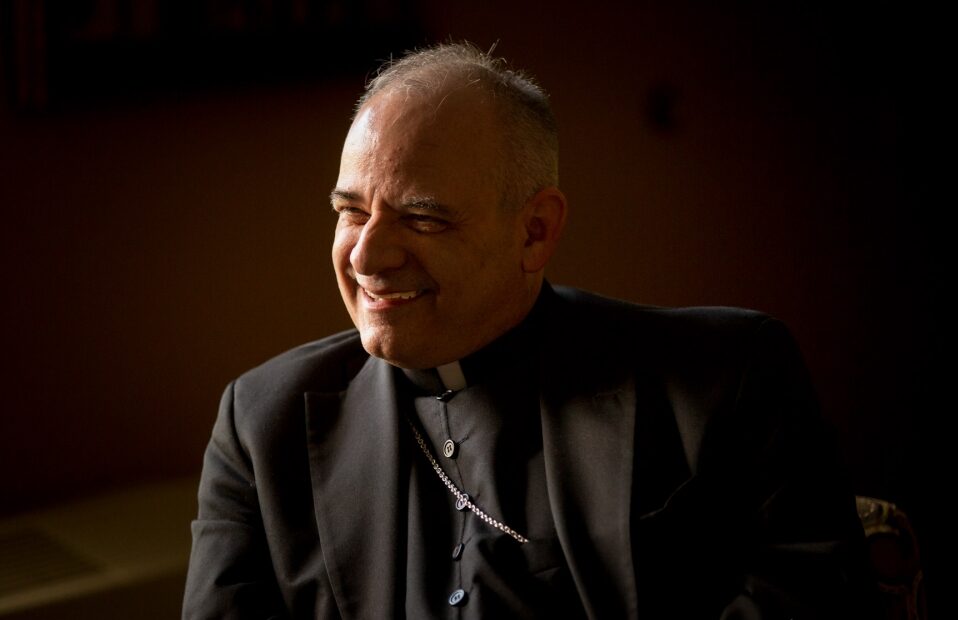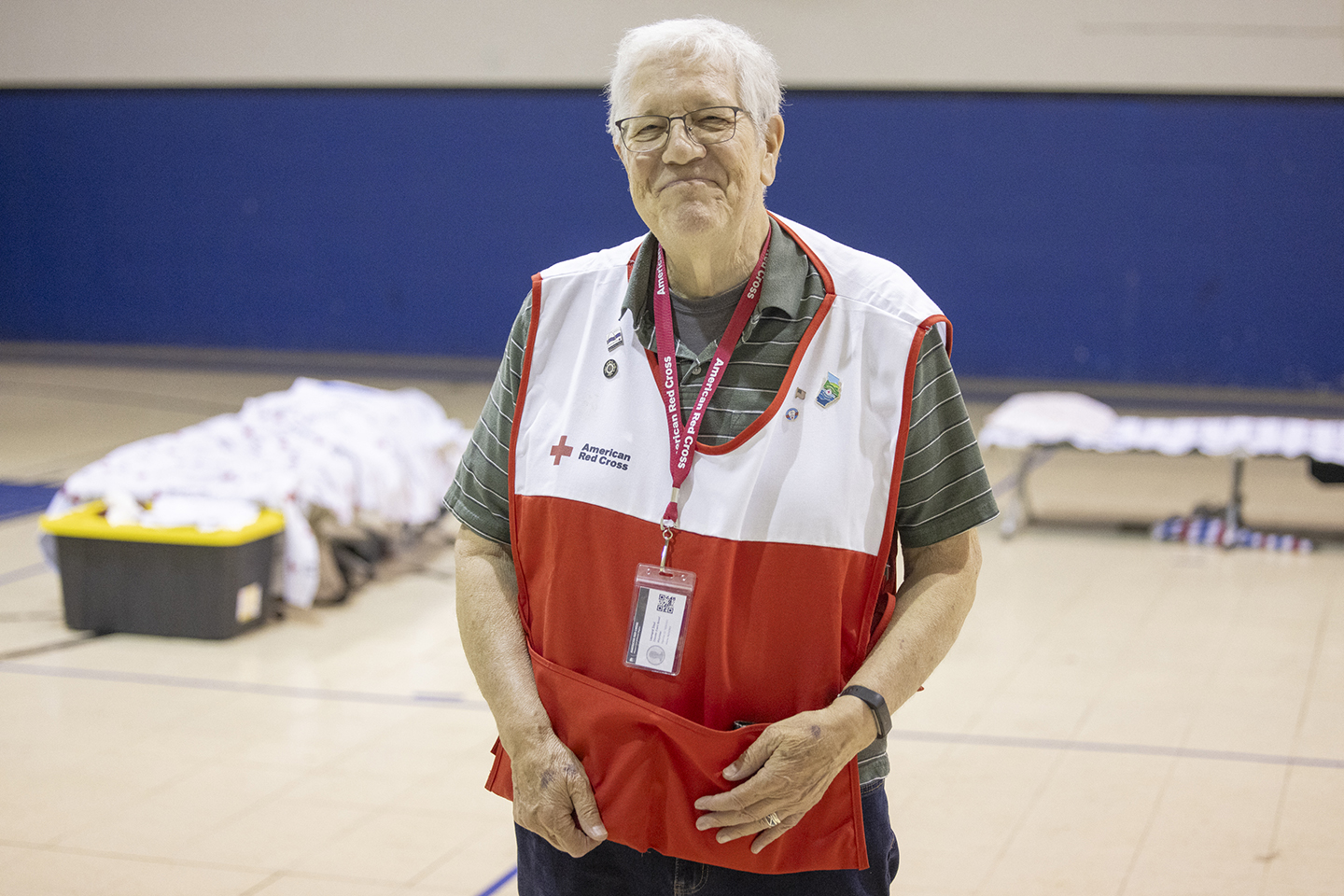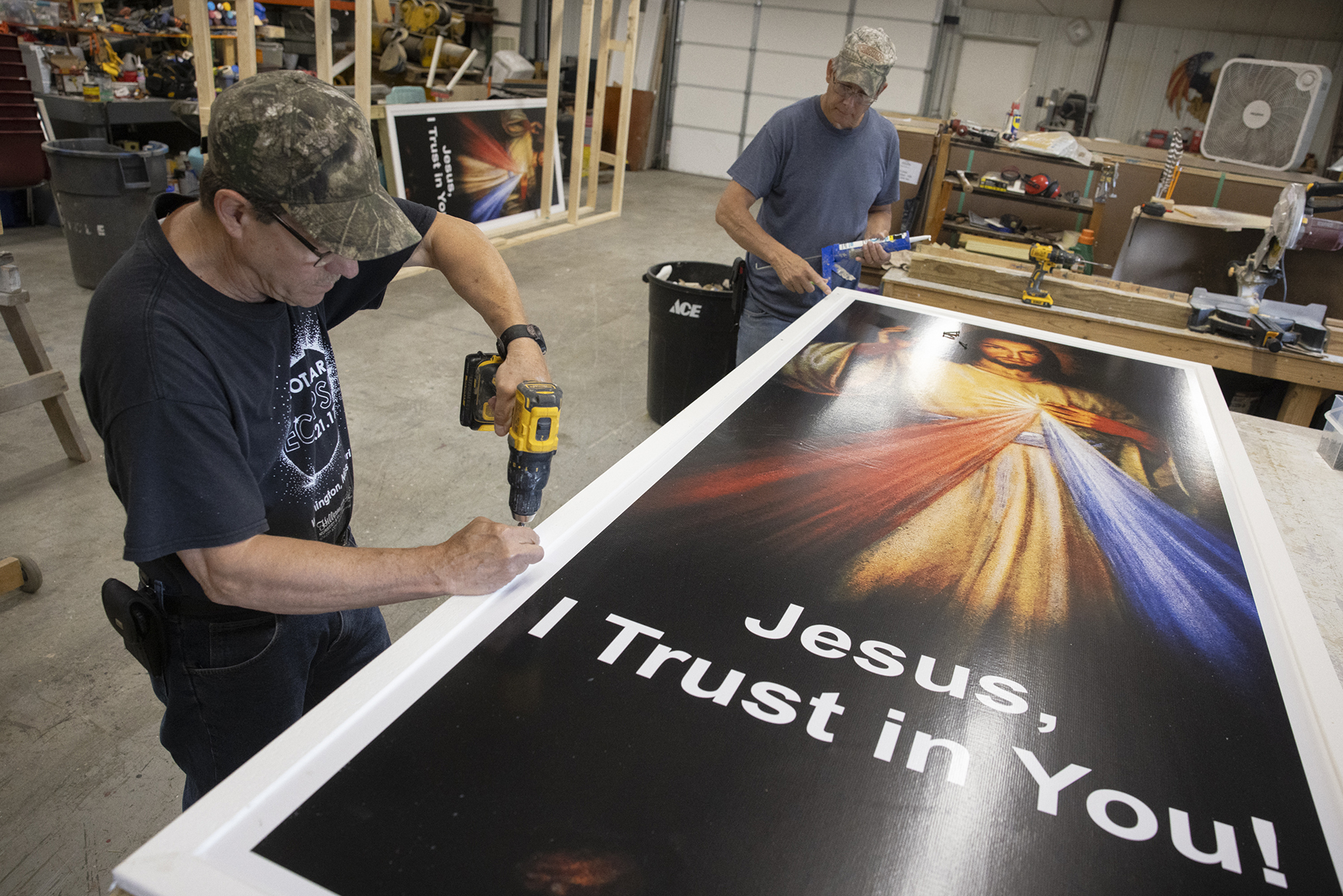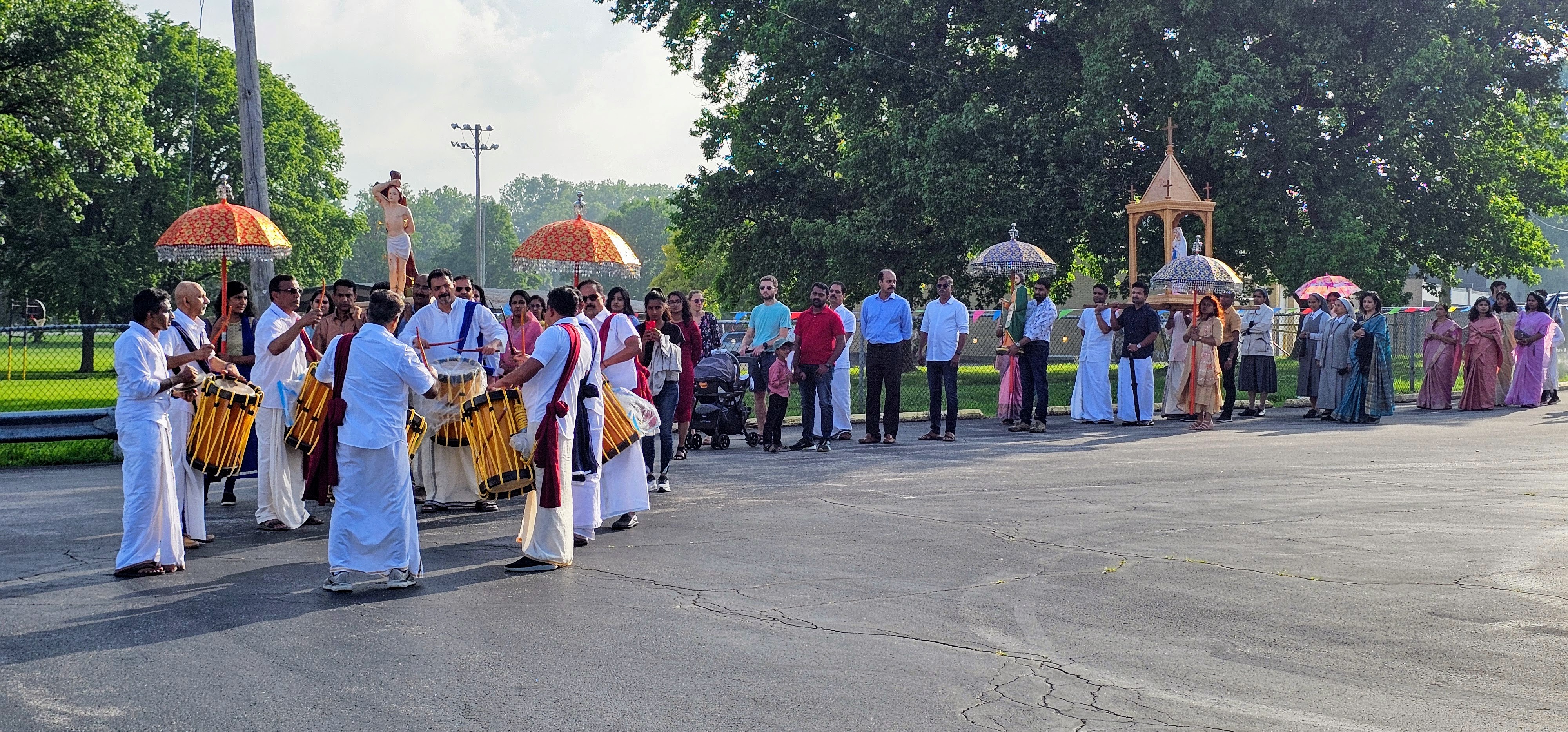Long lines show a deep devotion to Padre Pio
Assumption hosts relics of Capuchin Francican priest
A police officer genuflected. A man wearing a suit made the sign of the cross. A woman wrote a prayer intention and placed it in a box. Schoolchildren held holy cards against the relics of St. Pio of Pietrelcina, better known as Padre Pio.
The line was long in the early morning of Sept. 27 at Assumption Church in south St. Louis County, which hosted the relics of the beloved Capuchin Franciscan priest from Italy who was canonized by Pope John Paul II in 2002. It’s one stop on a nationwide tour in 18 U.S. dioceses. Mass was to be celebrated by Auxiliary Bishop Mark Rivituso that evening.
Padre Pio was blessed by God with the stigmata, the wounds of Christ, which he bore for 50 years, as well as other gifts such as bilocation, prophecy, conversion, reading of souls and miraculous cures. The relics on display for veneration included his glove, crusts of his wounds, gauze with his blood stains, a lock of his hair, and a handkerchief soaked with his sweat hours before he died. A video played in the corner of the church so people could learn more about his holy life.
In the Catholic Church, relics are physical objects associated with a saint or candidate for sainthood — part of the person’s body or something with which he or she was in contact. Relics aren’t worshiped but are treated with religious respect. Touching or praying in the presence of such an object helps a faithful individual focus on the saint’s life and virtues, so that through the saint’s prayer or intercession before God, the individual will be drawn closer to God.
“He’s my patron saint,” said Larry Lozier of St. Joseph Parish in Apple Creek, who waited in line early before the church opened for the veneration.
Lozier is well-informed about Padre Pio. He carries a blessed coin with the saint’s likeness, a blessed rosary in his truck dedicated to the saint and a statue of Padre Pio on his nightstand. “He’s with me all the time,” Lozier said.
Loretta Stevens of St. Margaret Mary Alacoque Parish in Oakville found out about Assumption’s hosting of the relics the previous night when visiting there to donate to a blood drive. She’s especially intrigued by Padre Pio because he lived in recent times, having died Sept. 23, 1968.
Kevin Cleary of St. Elizabeth Ann Seton Parish in St. Charles called Padre Pio “a sign of great hope for everyone — believers and unbelievers.”
His reason for attending is simple, he said. “I’m here because I’m hoping for miracles … for myself, family, friends, the world. Everyone needs the Lord.”
Judy Haberl, a fourth- and fifth-grade religion teacher at Sts. Peter and Paul School in Waterloo, Ill., accompanied a large group of upper-grade students from the school who bused in for the veneration. She called Padre Pio “an amazing modern saint, a very holy man, known as someone who was saintly and with unusual qualities that God gave him.”
Assumption students attended after going to early morning Mass.
Luciano Lamonarca, president and CEO of the Saint Pio Foundation in New York, accompanied the relics. Born in the same area of Italy where Padre Pio lived, Lamonarca’s deep devotion and admiration for the saint began when he was child. An operatic tenor, he formed the foundation in 2014 in part to thank Padre Pio for interceding in his life, which resulted in the healthy birth of his child.
Preparations began almost a year ago for the U.S. tour on the occasion of Padre Pio’s 130th birthday and 15th anniversary of his canonization. The tour was conducted for several weeks in the spring and now several weeks in the fall. St. Louis was chosen in part because of a strong presence of the Life Runners group and in admiration of Archbishop Robert J. Carlson. Lamonarca said about 11,000 people on average attend the veneration in the various cities.
St. Padre Pio was born on May 25, 1887 in Pietrelcina, Italy, and baptized Francesco Forgione. He first expressed his desire for priesthood at age 10. In order to pay for the preparatory education, his father, Grazio Forgione, emigrated to the United States in 1899, where he worked for several years.
The future saint entered the Capuchin order at age 15, taking the name Pio. He was ordained a priest in 1910 at the age of 23. During his lifetime, Padre Pio, who bore the stigmata, was known as a mystic with miraculous powers of healing and knowledge. Stigmata is the term the Catholic Church uses to speak about the wounds an individual receives that correspond to the crucifixion wounds of Jesus Christ. They can appear on the forehead, hands, wrists and feet.
His stigmata emerged during World War I, after Pope Benedict XV asked Christians to pray for an end to the conflict. Padre Pio had a vision in which Christ pierced his side. A few weeks later, on Sept. 20, 1918, Jesus again appeared to him, and he received the full stigmata. It remained with him until his death on Sept. 23, 1968. Pope John Paul II canonized him in 2002.
Padre Pio was especially admired by American GIs who met him during World War II.
For more information about St. Padre Pio and the book “Padre Pio and America,” visit www.saintpiofoundation.org. Funds raised by the Saint Pio Foundation are used to provide grants to American Catholic health care, educational, social, religious and cultural partner organizations.
A police officer genuflected. A man wearing a suit made the sign of the cross. A woman wrote a prayer intention and placed it in a box. Schoolchildren held holy … Long lines show a deep devotion to Padre Pio
Subscribe to Read All St. Louis Review Stories
All readers receive 5 stories to read free per month. After that, readers will need to be logged in.
If you are currently receive the St. Louis Review at your home or office, please send your name and address (and subscriber id if you know it) to subscriptions@stlouisreview.com to get your login information.
If you are not currently a subscriber to the St. Louis Review, please contact subscriptions@stlouisreview.com for information on how to subscribe.







